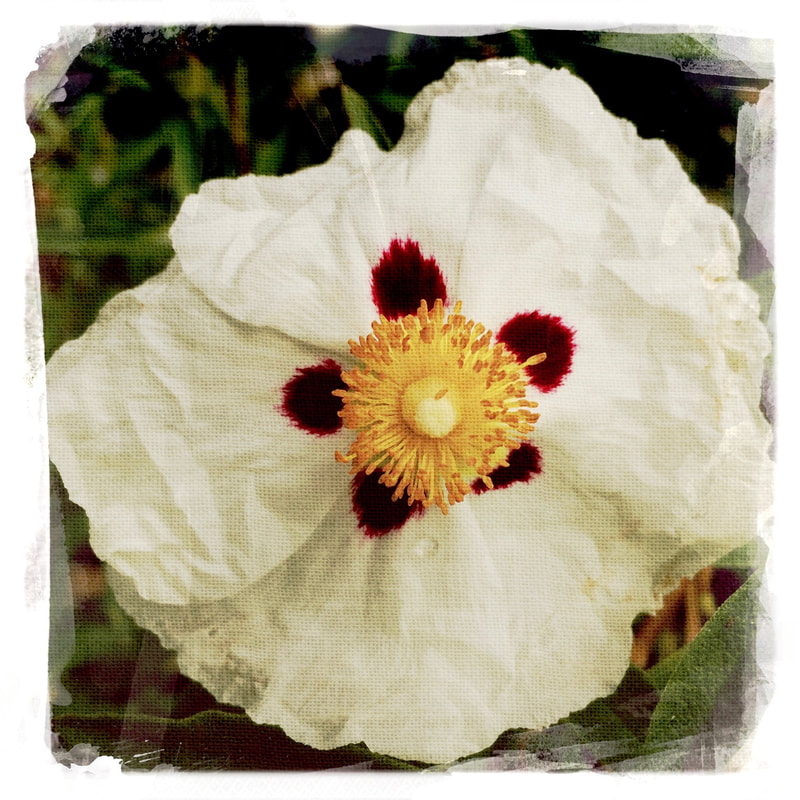ASSAY: A JOURNAL OF NONFICTION STUDIES
4.2
4.2
|
Edited by Christopher Schaberg and Ian Bogost, the Object Lessons series was launched by Bloomsbury in 2015 and is growing with a new batch of books published twice a year. Steven Johnson, the author of How We Got to Now, has called this series of concise books “something very close to magic.” In this conversation, authors of the most recently released Object Lessons books discuss how the magic works. Here, we discuss the form that the series takes and how we developed our projects for this particular type of literary vessel. We explore why and how we each approached the hidden life of a different ordinary thing and balanced breadth and depth to make, in Johnson’s words, “the everyday world come to life.”
___________
Anna Leahy, author of Tumor: For me, the ordinary thing was the tumor. I was particularly interested in the tumor as an object that is thought to be extraordinary but that is actually relatively mundane. Almost half of us will be diagnosed with some type of cancer during our lifetimes, and moles are tumors, too. So, tumors are rather run of the mill. What’s most fascinating to me is that a tumor is an object that is you, part of you. In some ways, it’s your own body—at the cell level—at its absolute best. I kept pondering how a tumor could be both part of the body and unwelcome there.
“The word tumor comes from the Latin for swelling. Indeed, a tumor is an overgrowth, a mass of tissue too large or unseemly for the body’s own good. Cells proliferate wildly and clump into something that doesn’t belong. The medical term for such a thing inside the body is neoplasm, which comes from words meaning new growth. A tumor is not necessarily cancer, and cancer is not necessarily a tumor. A tumor is new and different. Sometimes, it seems all the same, only more—much more—but the unfamiliar, the previously untraveled, makes all the difference.” Kim Adrian, author of Sock: My original impulse was to write an Object Lessons book about knitting because it is something I know a lot about. I am a longtime knitter and have written about knitting before. But knitting is an activity, not an object. This distinction was interesting in and of itself—thinking about the difference between an activity and the products of that activity: the two perspectives are surprisingly different. Everything changes. When I thought about what kind of knitted object to write about, I—somewhat rashly—chose the sock.
“A sock is many things. A sack for the foot. A foot condom. A pediform sheath. A buffer. An insulator. A sweat sponge. A smell lodger. A bit of flash. A suggestion of sex. A magnet for holes. Above all, a wanderer. But technically speaking, a sock is really just 'an inner foot covering,' and, as such, it can only truly fulfill its function when accompanied by an 'outer foot covering.' Normally this is a shoe or a boot. Between the outer and the inner foot coverings, the outer is usually considered the more essential, which is why we say, 'Put on your shoes and socks!' instead of, 'Put on your socks and shoes!' This actually has a name. It’s what’s known as a hysteron proteron: a rhetorical device that reverses the temporal order of an event so as to give primacy to the more significant element.” William Germano, author of Eye Chart: It was the Object Lessons format—its idea-shape—that let me imagine writing this book. I'm a scholar of early Modernism, and that pretty much means you're doomed to be interested in everything. A few years ago, I gave a short talk on how and when we developed tools for measuring visual acuity. Spain in 1623? The Netherlands in the 1860s? Why don't we know this? I put the talk away, but I kept thinking about the eye chart—a medical tool, an instantly recognizable graphic, a jokey meme—and wanted to connect the dots from the seventeenth century up to the present. Plus, nobody had written a book about eye charts and their power in our lives.
“I guess one of the reasons I've written this book is to find out just what intrigued me about the eye chart—how to define it. So here goes: the eye chart's an object, a diagnostic tool, a map of crises, an attitude, a piece of found poetry, a trope of advertising and politics and humor, a sign in the window we call the world, a message that finally reaches us only when, despite our best efforts, it slips out of sight.” Christopher J. Lee, author of Jet Lag: In truth, I’m still surprised I wrote about jet lag. My initial submission was like the surrealist parlor game “Exquisite Corpse”: I saw an ad for the Object Lessons series on the Los Angeles Review of Books website, clicked on the link, and, when prompted to submit an idea for a book, the first thing that popped into my head was jet lag. Granted, I had been living in Johannesburg and traveling back and forth between the States and South Africa. But never in my wildest dreams did I imagine writing a book on jet lag. Ian Bogost and Christopher Schaberg, who edit the series, were intrigued—and it turned out I had a lot to say about this subject.
Jet lag is a perspective, not simply a condition. Jet lag offers a critical vantage point about ourselves. It denotes, literally and figuratively, the ever-transitory, in-between world which we regularly inhabit—temporally and spatially, but also in terms of technology and culture, economic transformation and political change.” Matthew Newton, author of Shopping Mall: I wanted to write about a topic of cultural significance and personal depth that could also hold a reader’s attention. Shopping malls resonate with so many people--and have always been a place of curiosity, ritual, and fantasy in my life--that I thought it would be fun to explore. When I was a young child, the mall was an important place for me because my mother worked there. When I was a teenager, it became somewhere I could go to escape the isolation of the suburbs. In Shopping Mall, I wanted to merge my sentimentality for the mall with the realism of what malls represent on a social and economic level.
“It was a landscape unspoiled by technology, a social network not yet digitized. The mall was the internet before the internet even existed, a cabinet of curiosities for the analog world. I went there to absorb the larger scene unfolding around me—take in the culture I was desperate to consume, understand the people that I saw.” Margret Grebowicz, author of Whale Song: Whales are experiencing a bit of a cultural moment, and the fact that they vocalize is taken as a sign of their intelligence and complex social life. It struck me that this comeback is happening just as humans are vocalizing less and less. In Whale Song, I wanted to explore how differently humpback whale song means and matters to us today than it did back in the 1970s, when it was first heard by the general public. What accounts for these differences? Might whale song hold some sort of sort of key to understanding why human social life is becoming more impoverished, the less we vocalize?
“In this noisy century, there is certainly no lack of speech. But it’s reasonable to assume that intelligent, interested creatures would not wish to talk to creatures that talk to each other without saying anything […]. Noise as pollution means that society always takes place in an environment, or that today’s environmental problems cannot be thought in isolation from social ones. It is thus a powerful figure of how human impact on cetacean life is always necessarily both environmental and social, a perfect icon for the Anthropocene, in which crisis has become ordinary.” Rebecca Tuhus-Dubrow, author of Personal Stereo: I also wanted to explore the social and cultural aspects of an object. Like many children of the 1980s and 1990s, I had a strong attachment to my Walkman. Beyond general nostalgia, the Walkman seems to evoke especially fond associations, perhaps because music, like the sense of smell, has such potent connections to emotion and memory. This power is amplified, in the Walkman’s case, by the intimacy of that particular mode of listening. As I began researching, I also realized that the Walkman anticipated many of our current anxieties about the atomization of social life and public space. By enabling people to immerse themselves in their own worlds wherever they went, the Walkman altered behaviors and norms in ways that are still reverberating.
“I would look forward to walks and long bus rides as opportunities to slip into a dreamy realm. I’d press the ‘eject’ button, popping the player’s door ajar, then carefully slide in the rectangular plastic cassette, which had two holes like eyes. When I pressed ‘play,’ the tape's brown ribbon would start its steady motion. And the foam-covered headphones would release melodies and voices into my ears.” __________
Anna Leahy: In 1959, George R. Stewart coined the term microhistory to describe looking closely and carefully at a small slice of time in order to understand a larger narrative. In the 1970s, historians began using microhistory as a way to explore the social realities of historical events. One of the first and most influential microhistorians, Carlo Ginzburg, asserted in an essay that the concept of the microhistory seemed like “an empty container waiting to be filled.” In hindsight, drafting my book felt a lot like filling a container called Tumor. I’ve come to think of the Object Lessons series as a reinvention of the microhistory, as we each use a single object to arrive at a somewhat different understanding of the larger world around us.
Christopher J. Lee: I have a PhD in history, and, when I think of microhistory as a genre, I think of classic studies like Ginzburg’s The Cheese and the Worms (1976), Natalie Zemon Davis’s The Return of Martin Guerre (1983), or Jonathan Spence’s The Memory Palace of Matteo Ricci (1984)—all intensely researched and highly eccentric at the same time. Surprisingly, it never occurred to me that I was doing something similar. In retrospect, I hope my book contributes to this genre, especially with regard to unconventional subjects and the unique worldviews they can present. Rebecca Tuhus-Dubrow: Writing history is always a process of selecting material from the chaos of the past and shaping it into a narrative. Latching on to one small part of the past—whether a slice of time or an object—can offer a way into the chaos. Call it a lens or a springboard or a synecdoche. I found the Walkman to be at the nexus of cultural changes in music, technology, and public space that began to unfold in the 1980s and continues today. Kim Adrian: Microhistories uncover and examine aspects of shared life—objects, events, cultural phenomena—that are typically overlooked, either because they are so common we simply don’t see them or because there is some kind of social pressure against recognizing them. Since the Object Lessons series is “about the hidden lives of ordinary things,” it’s not surprising that our books align with microhistory. Sock looks at one of the most ordinary objects imaginable—something most people take utterly for granted (and may even consider beneath their notice)—and examines it from a number of angles: as a piece of technology, an object of desire, a reflection of our bipedal anatomy, and more. Matthew Newton: The term microhistory is fascinating when applied to the Object Lessons series, especially considering how pervasive certain objects become in our lives—and the personal meaning we attribute to them. My book builds on the concept of microhistory in a way that examines the importance of cultural resonance and shared experience. We all have shared personal connections to the common places in our lives—shopping malls are such places—but often it’s difficult to express what those connections mean to us. Why are they significant? Why do they linger in our minds? I wanted to take a closer, more intimate look at the spaces we return to in our lives, and somehow make sense of them. William Germano: I’m not sure I’m contributing a microhistory in Stewart’s sense. Or maybe my book—and the Object Lessons series taken as a whole, as Kim Adrian suggests—is a story about the insufficiently noticed, the unspoken quotidian. Microhistory? Maybe. But perhaps something more akin to Edgar Allan Poe’s purloined letter. It’s the thing for which you’re looking everywhere, and that turns out to be in the best hiding place of all: right in front of your eyes. And in the case of Eye Chart, it’s literally about letters. Margret Grebowicz: May I be so bold as to claim that I imagine myself doing micro-philosophy instead? The micro aspect of my project is less historical or narrative and more interrogative. I’ve been interested in whales and dolphins for a while but had written only short essays that seemed to have no real relationship to each other. It didn’t occur to me that there was a book there until I found that the papers consistently repeated a single, well-defined question--are humans actually interesting?--and that this was a suitable problem space in which to spend some time, beholding the rest of the world. Anna Leahy: In addition to being a re-envisioning of the microhistory, Object Lessons books might be considered the novellas of nonfiction because of their length (25,000-30,000 words). A couple of years ago, the Boston Society of Architects sponsored an exhibit that I didn’t see but that intrigues me because of its title: “Bigger than a Bread Box, Smaller than a Building.” The idea was to feature architects and designers working in the medium of installation, an in-between area of research and practice that blends various technologies and techniques. In a similar way, an Object Lessons book is bigger than an essay and smaller than a traditional book. Not every good idea fits every length equally well. I found this particular length to be a wonderful constraint that encouraged me to be more expansive and unpredictable than I am in essays but also helped me stay focused and make clear, often unexpected, connections as I wrote. William Germano: This is my fourth book and my second in this sort of short format. I learned a lot from writing The Tales of Hoffmann for the British Film Institute, where I needed to bring together quickly lots of different kinds of information. I gravitate toward short chapters anyway. For Eye Chart, I also needed to find the right voice and what I think of as the right nonfiction story-shape. How many angles? approaches? chapters? Suddenly it was obvious, at least to me. The classic Snellen eye chart, the one you see in the doctor's office, has eleven lines. So, I shaped this into eleven chapters. Margret Grebowicz: I’ve written two other very short books as well. In all three cases, I had the feeling that only after finishing the book was I ready to really begin to write it. But the constraint of length goes hand in hand with that of time, and one doesn’t usually have the luxury of a complete rewrite. So, the short books feels like a precursor to a book that will never exist, which is both good and bad. It’s not a definitive statement on its subject, but, for that very reason, it can take risks and be irreverent, which is what real thinking requires. Kim Adrian: After I wrote the first chapter, on the history of the sock, I felt completely flummoxed by my subject. Maybe I was used to writing work of a certain length (typical essay length) or maybe I wasn’t sure where to go next with this very tiny, very narrow subject. So, I threw myself into my research and went off on some wild tangents. Eventually, I started to see how all these angles of research might actually be connected, and I was able to get back into the writing, at which point, the length suddenly felt too short. In the end, I could easily have written another chapter—on socks and love—but there was no room. Rebecca Tuhus-Dubrow: I, too, encountered some fascinating angles that I didn’t have enough space to explore in Personal Stereo: apparently, the Walkman is still very popular in prisons, because of bans on other kinds of electronics. Yet the book’s tight structure encouraged me to zero in on a set of basic questions that interested me most: How did the Walkman represent a departure from previous ways of listening to music? What was the sensory and emotional experience like for those who first heard it? How was it portrayed in mainstream culture? How did it both prefigure our current technological infrastructure and fundamentally differ from it? Christopher J. Lee: I can always write more, so having a word limit can be a great thing in terms of forcing oneself—me—to be concise. A book of 30,000 words on jet lag is perhaps the perfect length for your average reader. Who would want to read an epic tome called Jet Lag? Matthew Newton: The constraint of length became a way to calm and focus myself. Each time I felt worried about the scope of the book, I would remind myself that there was no way to write an encyclopedic tome in the shorter format. And that wasn’t the type of book I wanted to write anyway. I wanted to humanize the experience of the shopping mall, take it beyond consumerism and address the emotional pull of these common places in our lives. The format gave me permission to do that. Anna Leahy: The format—the length, the page size, the striking cover design—is what unifies the Object Lessons books. What I appreciate most about the series, though, is that each book offers a distinct perspective and voice, even as they are all connected by the idea of what an object means. Even before I wrote Tumor, I’d read four of the books in the series (and I’ve read more since finishing my own contribution). I felt as if I got to know the way each author’s mind worked as I became an insider on Silence, Dust, Hood, and Driver’s License. Object Lessons books give readers permission to ponder the hidden meaning of things—meaning that lurks in the most ordinary surroundings—and to look differently at the stuff of our daily lives. Anyone who reads one will likely want to read another. |
Click here to download a printable PDF with Works Cited.
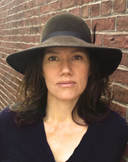
Kim Adrian is the author of the memoir The Twenty-Seventh Letter of the Alphabet (University of Nebraska Press, October 2018) and the editor of The Shell Game: Writers Borrow Readymade Forms. Her award-winning stories and essays have appeared in O Magazine, Tin House, Agni, the Gettysburg Review, Brevity, and many other places. More at kimadrian.com.

William Germano teaches at Cooper Union in New York. He studies cultural traces—problems like the idea of visual measurement and graphic design, opera on film, or how composers absorb and reinvent Shakespeare’s plays. He also writes about writing and publishing. A regular contributor to the Chronicle of Higher Education’s language blog Lingua Franca, his books include Getting It Published: A Guide for Scholars and Anyone Else Serious about Serious Books (U Chicago Press, 2016), From Dissertation to Book (U Chicago Press, 2013), and The Tales of Hoffmann (British Film Institute, 2013).
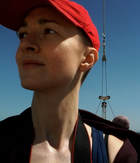
Margret Grebowicz is the author of Whale Song (Bloomsbury 2017), The National Park to Come (Stanford 2015), and Why Internet Porn Matters (Stanford 2013), currently researching the meaning of mountains and mountaineering in late capitalism. She is associate professor of philosophy at Goucher College. Find her at [email protected].
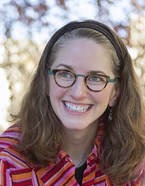
Anna Leahy is the author of the nonfiction book Tumor and the poetry collections Aperture and Constituents of Matter and the co-author of Generation Space, Conversing with Cancer, and What We Talk about When We Talk about Creative Writing. Her essays have appeared at The Atlantic, The Southern Review, The Pinch, and elsewhere and won top awards from Ninth Letter and Dogwood in 2016. She directs the MFA program at Chapman University. See more at www.amleahy.com.
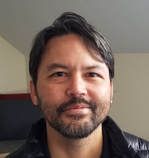
Christopher J. Lee is an associate professor of history at Lafayette College in Easton, Pennsylvania. In addition to Jet Lag, he has published four previous books, mostly on southern Africa. He travels frequently.
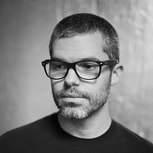
Matthew Newton is director of publishing at Carnegie Museum of Art in Pittsburgh, Pennsylvania. His work has been published by the Oxford American, The Atlantic's CityLab, Forbes, the Rumpus, Guernica, and Spin. He lives in Western Pennsylvania with his wife and two sons.
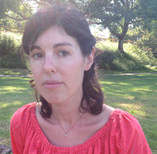
Rebecca Tuhus-Dubrow, author of Personal Stereo, a cultural history of the Walkman, is a writer-in-residence at the University of California, Irvine and a contributing editor at Dissent. Her writing has appeared in Slate, The Nation, The New York Times Book Review, and the Los Angeles Review of Books. She was previously a contributing writer for the Boston Globe’s Ideas section, a columnist for the urban affairs website Next City, and a Journalism and Media Fellow at the UCLA Institute of the Environment and Sustainability.
